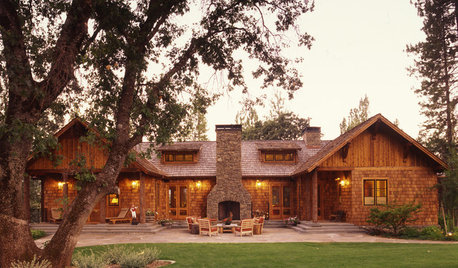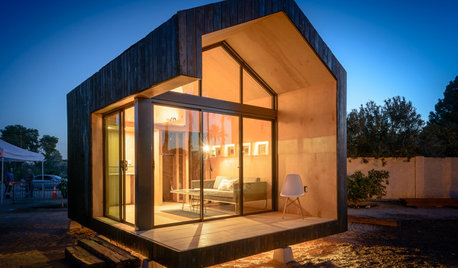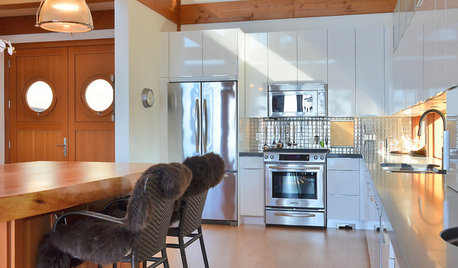I've learned a lot over the last 2 years from this forum and just wanted to share my story as others start to plan fall overseeding (gee, is it that time already?)
General Data: Zone 7, Transition Zone, Prince William County, Northern Virginia. 19K Sq Ft total with 90% of the area slopes somewhat, meaning not much flat ground. 9K sq ft generally full sun, remainder in some shade, 500 sq ft in full shade. Irrigation by hose and sprinkler when needed. Soil test was done in July 07 indicating Ph 5.6 (50# lime/1000), very high hydrogen and very low cation exchange capacity indicating low organic matter. Soil structure is sandy loam based on home structure test, which was very surprising, given the reputation for clay in Virginia soils. I wonder if previous owners had tried to add sand at some point in the past. N recommendation was 3#/1000, phosphorous and potassium were high resulting in a x-1-0 NPK ratio. In general, Im not after the best lawn in the neighborhood. I want a nice healthy soil that supports a good dense stand of mixed cool season grasses. I have every intention of trying to use as few chemicals as possible so I wonÂt say IÂm organic, but I lean that direction when possible.
1. Planting: Over seeded in fall 07 (Mid Sep) because of declining turf quality following draughty summer and improper basic lawn care for the last 8 years. Remaining grass was cut short, thatching rake used to scarify and spike aerator used to open soil. Seeded Lesco Transition (3 variety TTTF) at 2.75 pounds per 1000 sq ft. 10# of shade mix for full shade area. Fertilized with starter fertilizer at 1# nitrogen per 1000 and added 15#/1000 of alfalfa pellets (rabbit food) after 2d mowing. Added 1.2# of nitrogen (urea 46-0-0) on Thanksgiving weekend. Also added 38# per 1000 of lime in 2 separate applications. Probably wonÂt add anymore until next soil test and see if feed grains help the soil get to neutral Ph.
Results: TTTF germinated in 7-9 days. Full growth to first mowing was 3 weeks. The lawn went from approximately 40-50% turf coverage to 85% coverage. Spot seeded bare areas with bagged compost/topsoil mix and seed. Spring to early summer approximately 95% coverage, but not as dense as sod. Shady area was much slower and much more fragile to mowing. Density did increase over the fall until growth ceased because of cold. All leaves were mulched into lawn. The winter lawn color was green.
Lessons Learned:
1. Soil was extremely hard. Believe most of the problems I have could be traced to compaction. A core aeration has never been done on my lawn in my years on the property. A new tool has been added to the arsenal and I will be core aerating this fall.
2. Seeding rate. A low seeding rate was not so much chosen as worked out as a balance to other costs and trial basis. My going in thought was to get some grass growing, move to an organic fertilization program, and work on basic lawn care. I was also concerned about not seeding at too high a rate and could not find a consistent answer. Plus, a hundred pounds of seed just seemed like too much. Frankly, IÂm surprised by the density achieved at that rate and in hindsight a 5-6#/1000 would perhaps have been a better seeding rate based on my existing cover. I also believe the low seeding rate opened the door for germination of poa annua, which I had a significant problem with. Even with a much better turf coverage I will be overseeding this fall at the higher rate. Too high of rates also have some inherent problems so there needs to be some consideration of the rate based on existing cover, what you are trying to do with the lawn, and what type of seed your using.
2. Spring/Summer 08: Applications: 10#/1000 SBM, Dimension pre-emergent and a post emergent with no nitrogen. Spot weeding with WBG. 20#/1000 of alfalfa pellets and bagged compost in May.
The 2 significant problems I have had this year are poa annua infestation and fungus. My approach to the poa was to use a propane torch to burn off the seed heads before mowing. My bagging mower is unfortunately inop so IÂve only been able to mulch mow. Not the best approach, but the thought was to keep as many seeds as possible from reaching the soil, let it burn out over the summer and use a higher seeding rate next fall and add perennial rye to outcompete the poa. We will see, but poa is likely to be a problem as long as the soil is being disturbed to overseed.
The fungus was, I believe, a result of above average rainfall, but most coming in late afternoon and nighttime thunderstorms, hot and humid weather conditions in late June and addition of lots of organic matter from clippings, alfalfa pellets and bagged compost that held a lot of moisture. A perfect storm. I donÂt think I have enough soil critters to use all that was applied in the time frame before the weather conditions appeared. The bad fungi won out. The fungus was treated, as an experiment, with either baby shampoo or dusted with baking soda, or a combination. Neither products I would consider organic, but at they least sound like it rather than Propiconazole. The baby shampoo appeared to provide the most cure without harming the existing grass. The baking soda dusted on the effected area was too much and the grass has turned brown in those spots. IÂm waiting to see if it will recover. I will also consider cutting at a shorter height (3" versus 4") when there is significant rainfall so the top of the soil can dry better.
Lessons Learned.
Be more mindful of weather conditions. There are 3 month climate predictions available that combine temperature and rainfall. So far they have been fairly accurate. I should have better anticipated and used corn meal rather than alfalfa this last May. That is what I will do next year and determine if there is better fungal prevention. Baby shampoo will be my go to solution if problems arise in the future. I'll probably be more flexible in cutting height based on weather conditions too.
In general, many of the problems IÂve experienced trace back to compacted soil. Weeds, fungus, and unwanted poa grasses love compacted soil. I now have the ability to fix that and would highly recommend core aeration as part of basic lawn care.
Plans for this fall. In early August I plan to add 10#/1000 of SBM. Mid to late August IÂll reduce height of grass to shortest cut (gradually), core aerate heavily, scarify, add a TTTF/KBG 90-10 and TTPR seed at a total of 5.5 # per 1000 seed rate (50 pounds each). Top dress with compost/soil mix and do some mending of noted weak areas. Water, fertilize, and mulch leaves. Give this a good year of proper care and see if it needs a start over or will be a nice mixed lawn with few problems.














fescuedream
bettyfb
Related Discussions
Apple grafting- lesson learned- give it time
Q
Gardening Lessons Learned by Trial & Error
Q
Have I learned my lesson(s) ?????
Q
My husband and lessons learned.
Q
soccer_dadOriginal Author
bettyfb